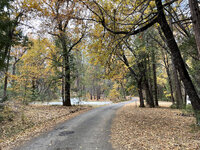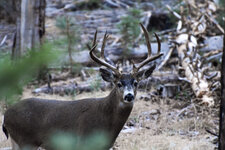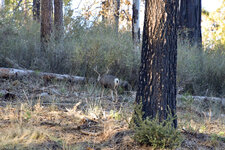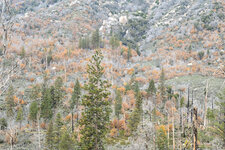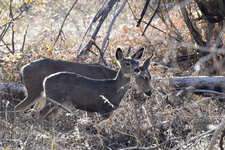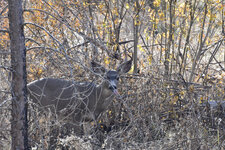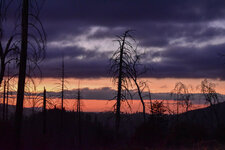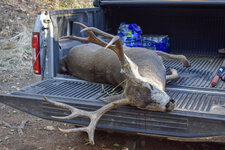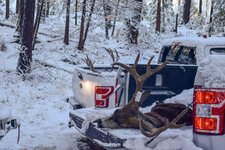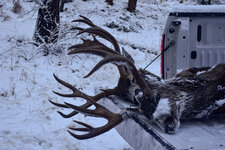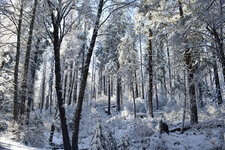CaliWoodsman
Lil-Rokslider
Prelude
My brother, Peter, and I had our 2022 hunt plans all laid out perfectly. He would draw a limited-entry elk tag in Utah, and I would come along with him with plans to draw it myself the following year. However, the dreaded “Unsuccessful” email arrived from Utah, forcing us to scramble to Plan B.
Plan B for us was cashing in our maximum preference points in California for a mule deer hunt. Now, California is not known for its deer hunting, and rightly so. The deer herds throughout the state are in very poor shape, and most of the general units have success rates in the single digits. That didn’t deter us from drawing a late-season rifle hunt. Living about 90 minutes from the unit, we had spent plenty of time on the winter range over the years, knew the unit well, and felt good about our chances of taking two good bucks.
This particular hunt is a migration hunt that is almost completely weather dependent. Given California’s ongoing drought, betting on precipitation is a recipe for disappointment. If it’s hot and dry, as has been the case in many recent years, the deer won’t be migrating yet and you’re left hunting a very sparse resident herd. If there’s adequate snowfall before or during the hunt, you’ll be hunting a rutting, migrating deer herd with the chance at a very special buck.
California mule deer are a sub-species of mule deer that reside of the western slope of the Sierra Nevada’s. They’re smaller in body size and antler size than their Rocky Mountain brethren, almost closer to a blacktail in many respects. They’re also extremely reclusive, sticking to the dark timber and thick brush almost exclusively. It’s always a shock to the system to hunt mule deer out of state and see the difference in their size and behavior.
We spent the summer preparing for the hunt and dreaming about the bucks we might see. I probably checked Accuweather.com enough times in the months leading up to the hunt that they thought I was trying to crash their site. A big snowstorm hit a couple of weeks before the hunt. It was the type of storm that would get the deer migrating, but we questioned if the storm was too early and if there was any more snow on the way.
Sure enough, we arrived to set up camp and found very little snow on the ground. We talked with the local game warden, who told us that most of the snow had melted off and the deer had followed the snowline back up into higher country outside the unit. That was a little disappointing to be sure, but another big snowstorm was forecasted to hit on Day 6 of this nine-day hunt. We just had to be patient.




My brother, Peter, and I had our 2022 hunt plans all laid out perfectly. He would draw a limited-entry elk tag in Utah, and I would come along with him with plans to draw it myself the following year. However, the dreaded “Unsuccessful” email arrived from Utah, forcing us to scramble to Plan B.
Plan B for us was cashing in our maximum preference points in California for a mule deer hunt. Now, California is not known for its deer hunting, and rightly so. The deer herds throughout the state are in very poor shape, and most of the general units have success rates in the single digits. That didn’t deter us from drawing a late-season rifle hunt. Living about 90 minutes from the unit, we had spent plenty of time on the winter range over the years, knew the unit well, and felt good about our chances of taking two good bucks.
This particular hunt is a migration hunt that is almost completely weather dependent. Given California’s ongoing drought, betting on precipitation is a recipe for disappointment. If it’s hot and dry, as has been the case in many recent years, the deer won’t be migrating yet and you’re left hunting a very sparse resident herd. If there’s adequate snowfall before or during the hunt, you’ll be hunting a rutting, migrating deer herd with the chance at a very special buck.
California mule deer are a sub-species of mule deer that reside of the western slope of the Sierra Nevada’s. They’re smaller in body size and antler size than their Rocky Mountain brethren, almost closer to a blacktail in many respects. They’re also extremely reclusive, sticking to the dark timber and thick brush almost exclusively. It’s always a shock to the system to hunt mule deer out of state and see the difference in their size and behavior.
We spent the summer preparing for the hunt and dreaming about the bucks we might see. I probably checked Accuweather.com enough times in the months leading up to the hunt that they thought I was trying to crash their site. A big snowstorm hit a couple of weeks before the hunt. It was the type of storm that would get the deer migrating, but we questioned if the storm was too early and if there was any more snow on the way.
Sure enough, we arrived to set up camp and found very little snow on the ground. We talked with the local game warden, who told us that most of the snow had melted off and the deer had followed the snowline back up into higher country outside the unit. That was a little disappointing to be sure, but another big snowstorm was forecasted to hit on Day 6 of this nine-day hunt. We just had to be patient.




Attachments
Last edited:

